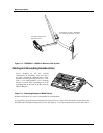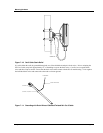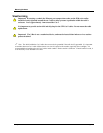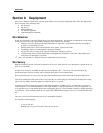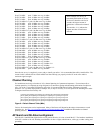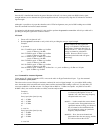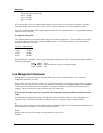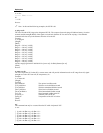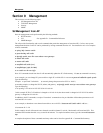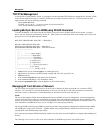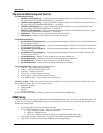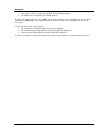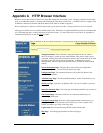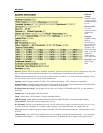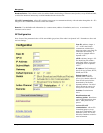
Deployment
Trango Broadband Wireless — Access5830 User Manual Rev. F page 40
linktest <su#>
This command checks the integrity of the wireless link from the standpoint of performance. The AP will send 500 large
packets to the SU, and the SU will return what it receives to the AP. Small numbers of errors are inconsequential. Look
first for an average throughput above 9000 kilobits per second (kbps). A perfect link (without dropped packets) will yield
average throughput over 10,000 kbps. If heavy packet loss occurs it may be caused by interference or multi-path.
Example:
#> linktest 88
[suid] 88 [pkt len] 1600 bytes [# of pkts per cycle] 500 [cycle] 10
0 [AP Tx]500 [AP Rx]500 [AP RxErr]0 [SU Tx]500 [SU Rx]500 [SU RxErr]0
1277ms 10023 kbps
1 [AP Tx]500 [AP Rx]500 [AP RxErr]0 [SU Tx]500 [SU Rx]500 [SU RxErr]0
1278 ms 10015 kbps
.
.
9 [AP Tx]500 [AP Rx]500 [AP RxErr]0 [SU Tx]500 [SU Rx]500 [SU RxErr]0
1277 ms 10023 kbps
[AP Total nTx] 5000 pkts
[AP Total nRx] 5000 pkts
[AP Total nRxErr] 0 pkts
[SU Total nTx] 5000 pkts
[SU Total nRx] 5000 pkts
[SU Total nRxErr] 0 pkts
[AP to SU Error Rate] 0.00 %
[SU to AP Error Rate] 0.00 %
[Avg of Throughput] 10017 kbps
su testrflink <su#>
This command also checks the integrity of the wireless link from the standpoint of packet loss. Similar to the linktest
command, however this test does not provide as much detail. In this test, the AP will send 20 large packets to the SU,
and the SU will in turn send the same 20 packets back to the AP. The expected result of an error free link is 20..20..20,
indicating (in the following sequence) 20 packets sent from AP, 20 packets received back at AP, and 20 packets received
at SU. Any results other than 20..20..20 indicate lost packets, and are most likely due to interference or an inadequate
signal to noise ratio.
The “r” is used to repeat the RF link test repeatedly, until the user terminates the test by hitting SPACE ENTER.
#> su testrflink 8000 r
Press [space] then [enter] to stop
[len] 1512
[suid] 8000
[ 0] ...........[AP Tx] 20 [AP Rx] 20 [SU Rx] 20
[ 1] ...........[AP Tx] 20 [AP Rx] 20 [SU Rx] 20
[ 2] ...........[AP Tx] 20 [AP Rx] 20 [SU Rx] 20
[ 3] ...........[AP Tx] 20 [AP Rx] 20 [SU Rx] 20
[ 4] ...........[AP Tx] 20 [AP Rx] 20 [SU Rx] 20
[ 5] ...........[AP Tx] 20 [AP Rx] 20 [SU Rx] 20
Success.
#>
As another example, a result of 20..10..18 would indicate 20 packets sent from AP, 18 packets received at SU, and 10
packets received back at the AP. For thorough results it is recommended you run the command repeatedly for at least 1
minute or more to determine if packets are passing without error consistently over time.



